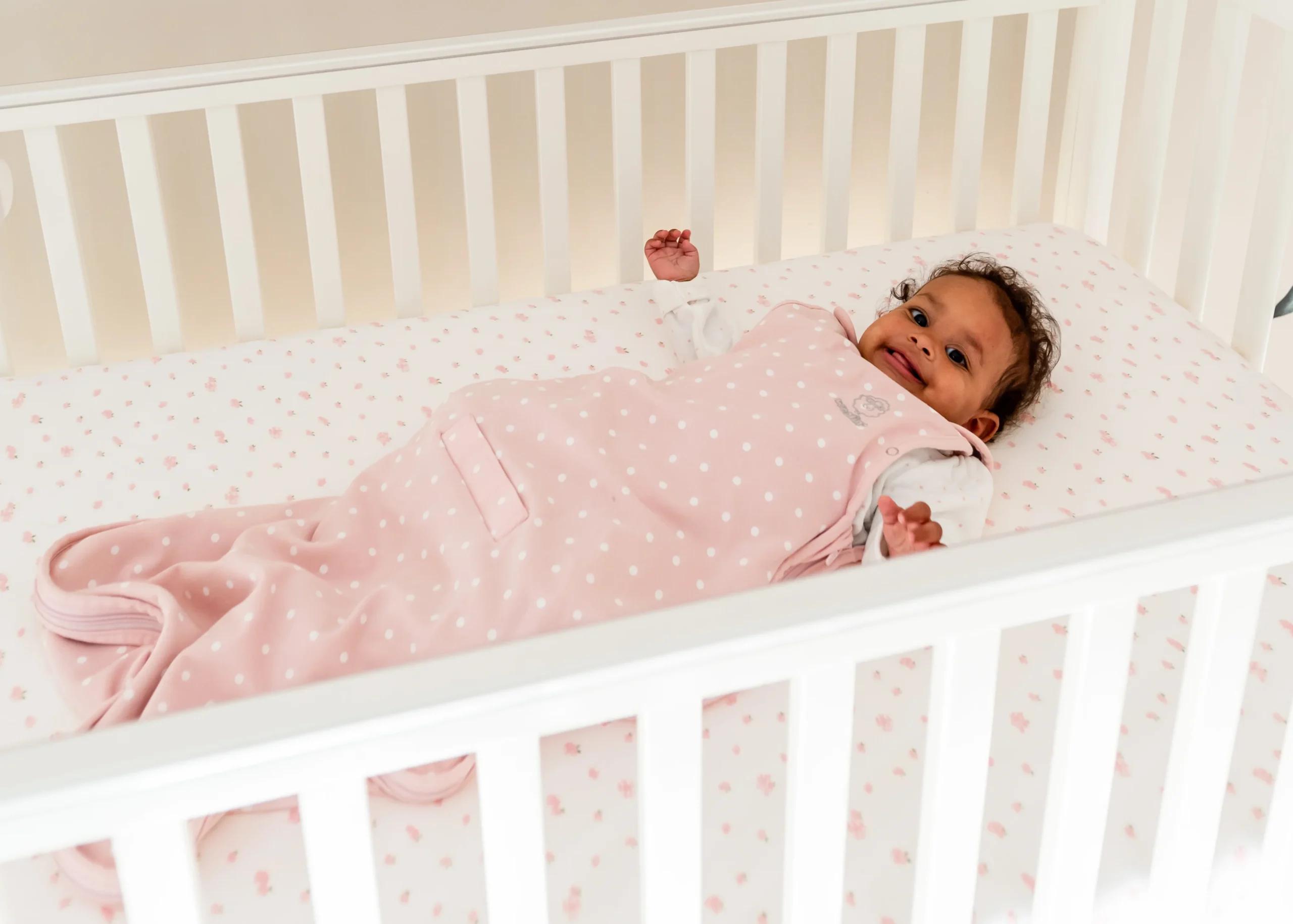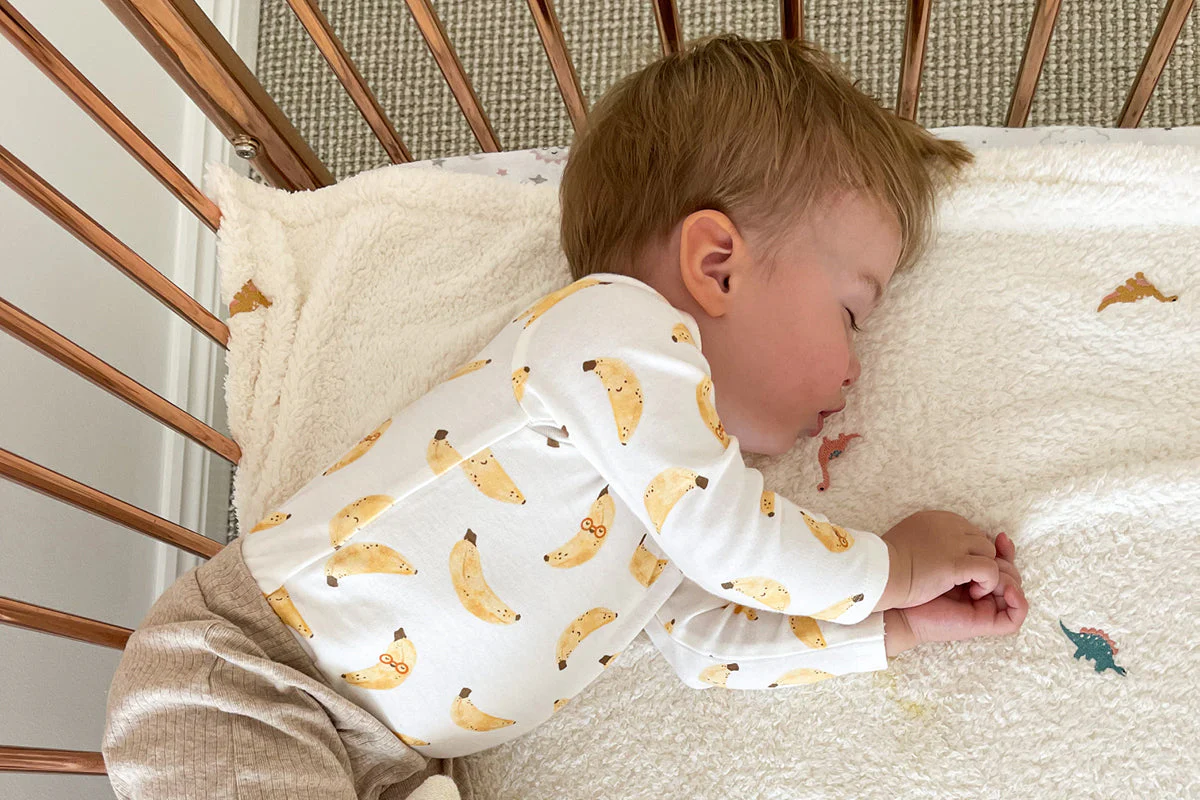Getting your little one to drift off peacefully can sometimes feel tricky, but it can actually be quite simple. Creating a safe sleep environment is a big part of the equation for those serene nights.
Start out by selecting a crib safety-approved for infants, ensuring it stands strong and is free of any potential hazards.
A firm mattress with a fitted sheet is just as important, as it helps prevent any risk of suffocation.
As bedtime approaches, gentle swaddling techniques can work wonders in comforting your baby. Plus, establishing a calming bedtime routine can really set the mood for rest. A cozy room with the right temperature lays the groundwork for sweet dreams, making all the difference in your baby’s sleep environment and overall well-being.
In case that you need more tips, Ask Bebe today!
Infant Sleep Position Importance
Ensuring your little one sleeps soundly is important for both their health and your peace of mind. The way your baby rests can significantly impact their safety during those night hours.
Experts agree: laying them on their back is the safest choice! This position greatly reduces the chances of unexpected incidents like suffocation.
A firm mattress is also a must; soft bedding is a no-go when it comes to providing a secure sleep environment.
If you’re setting up a cozy haven, make sure to consider the room temperature; keeping it just right can help your baby drift off comfortably. And don’t underestimate the value of a baby monitor—it lets you keep an eye on your bundle of joy while they snooze peacefully. Creating a serene atmosphere can make all the difference in your baby’s sleep quality! As you transition to sleep training, consider incorporating cosleeping guidelines, using a baby monitor, adjusting nightlights and room temperature, and ensuring your little one is snug in a sleep sack.
Crib Safety Essentials For Parents
Creating a secure space for your little one to sleep peacefully is fundamental for every parent. Safe Practices for Crib Standards: Get to know the latest guidelines and regulations surrounding cribs.
Opt for products from reputable brands to ensure safety and quality for your baby.
Designing a Cozy Sleep Nest: A properly fitted, firm mattress is key to a safe sleep environment.
Steer clear of adding toys, pillows, or blankets, as they can pose a risk of suffocation during diaper changes.
Positioning for Peaceful Sleep: Always lay your baby on their back for a restful night; this is the safest way for newborns. Sticking to a consistent sleep routine can enhance their overall experience, making bedtime smoother, especially when incorporating safe practices like diaper changes, using a white noise machine, and integrating soothing sounds alongside tummy time.
Safe Sleep Practices for Babies
- According to the American Academy of Pediatrics, placing babies on their backs to sleep reduces the risk of Sudden Infant Death Syndrome (SIDS).
- Crib safety standards are updated regularly to ensure that products meet the latest safety regulations, minimizing potential hazards.
- The use of a firm mattress is recommended to prevent suffocation and ensure proper support for a baby’s developing body.
- Consistent sleep routines have been shown to improve sleep quality and help babies feel more secure during bedtime.
Effective Swaddling Techniques For Newborns
When it comes to keeping your little one calm and cozy, there’s nothing quite like the comfort of a well-executed wrap. Parents often find this technique not only helps infants feel secure but also plays a significant role in enhancing their sleep cycles, which can be a godsend during those sleepless nights.
By mimicking that snug environment of the womb, swaddling encourages a peaceful atmosphere for your baby, making it easier for them to drift off and stay asleep.
The right choice of fabric is key; opting for something lightweight and breathable can do wonders for your infant’s comfort.
Just remember, the wrap should be snug enough to provide security without restricting movement—especially around the hips—to ensure bassinet safety.
Swaddling has a rich history, embraced by various cultures for its calming effects on sleep cycles and its role in alleviating sleep deprivation in newborns, while also contributing to safe infant care practices related to crib mattress and bassinet safety and mitigating concerns such as sleep apnea.
Is Pacifier Use Safe For Sleep?
When it comes to soothing a fussy baby, many parents find themselves reaching for a pacifier, but what’s the scoop on using them during sleep?. Pediatric recommendations often highlight how these little tools can help calm infants, particularly during those restless nights.
Interestingly, studies show that using a pacifier for sleep might lower the risk of SIDS, providing a little extra peace of mind for parents.
Timing is key; introducing a pacifier should align with your baby’s developmental milestones.
It’s also super important to make sure your little one is on a safe surface for resting. As you continue to create a routine for sleep, remember that these parental habits can make a world of difference.
It is essential for parents to understand developmental milestones, follow pediatric recommendations, adopt beneficial parental habits, practice babywearing, ensure safe surfaces for play, and establish a consistent nap schedule.
Pacifiers and Sleep
- Using a pacifier during sleep may reduce the risk of Sudden Infant Death Syndrome (SIDS).
- Introducing a pacifier should coincide with the baby’s developmental milestones for optimal effectiveness.
- Ensuring a safe sleeping surface is crucial for the well-being of the infant during sleep.
- Establishing a consistent nap schedule can enhance the overall sleep routine for babies.
Creating A Calming Sleep Environment
Creating a serene atmosphere for your little one can truly change the sleep game. A peaceful environment helps babies pick up on their sleep cues and doze off with ease.
Research shows that a comforting space can lead to longer, deeper slumbers for infants.
To start, aim for a room temperature on the cooler side, around 68-72°F, and hang up blackout curtains to keep bright light at bay.
Soft sound machines can provide a calming backdrop, helping to mask any sudden, disruptive noises that might interrupt their rest. A safe area to sleep is also key; choose a firm mattress with fitted sheets and keep any choking hazards, like plush toys and heavy blankets, out of the crib. Incorporating calming scents, such as lavender, can enhance sleep cues and create a soothing environment, making it easier for babies to fall asleep safely while using lullabies, practicing back sleeping, and minimizing choking hazards with appropriate bedding and sound machines.
What Are Cosleeping Guidelines For Infants
Bringing your little one into the cozy world of shared sleep can create a wonderful bond, but it’s important to keep safety in mind. Start by ensuring your sleeping surface is firm and free of any soft bedding.
For the best co-sleeping safety, your baby should always rest on their back, which helps reduce risks associated with sleep environments.
Creating a secure space for your infant adds an extra layer of comfort.
While sharing a bed, consider having a separate sleeping area for your baby.
Many myths surround the idea of cosleeping leading to accidents, but when you follow the right practices, you can help ensure a safe experience. Keep an eye on your habits throughout the night; being mindful can make a significant difference.
These factors play a crucial role in ensuring the well-being of infants, including infant studies, associations with cosleeping safety, nursery organization, environmental comfort, and adherence to bumper guidelines.
Cosleeping Safety
- Firm sleeping surfaces reduce the risk of suffocation and other sleep-related incidents.
- Placing infants on their backs to sleep significantly lowers the risk of Sudden Infant Death Syndrome (SIDS).
- Creating a separate sleeping area for the baby can enhance safety while still promoting bonding.
- Mindful sleeping habits and practices contribute to a safer cosleeping environment.
Understanding Sleep Cycles And Cues
Did you know that the way newborns snooze is often quite different from how adults do?. For instance, babies spend about 50% of their nightly rest in lighter slumber, which is important for their growth and development.
By recognizing their sleep cycles, you can develop effective soothing techniques when they start stirring or fussing.
Now, let’s chat about those all-important sleep cues.
These little signals—like yawning or rubbing their eyes—indicate when your baby is ready to drift off.
Tuning into these signs can enhance the duration of their sleep and make it easier for you to respond in a timely manner. Each baby experiences four stages of safety education, regression, soothing techniques, and duration, guided by specialists and informed by ongoing campaigns.
Establishing A Consistent Sleep Routine
Creating a peaceful atmosphere for your little one can truly transform your nights. A reliable schedule supports your baby’s development and leads to better sleep quality for everyone in the house.
Ensuring the right sleep environment is also essential.
Incorporating safe positioning aids in the cot can assist in reducing the risk of cot death prevention.
Don’t forget about daytime napping; it sets a foundation for healthy sleep hygiene and helps your baby recharge.
Introducing calming activities before bed can signal that it’s time to wind down. Consider incorporating reading or gentle rocking into your pre-sleep ritual.
Awareness of common challenges is key, and being adaptable as your baby grows is important. Tailor your approach to fit your unique family lifestyle, as what works for your resources, hygiene practices, cot death prevention strategies, positioning aids, napping routines, and education may differ significantly from others.
Creating a Peaceful Sleep Environment
- Consistent sleep schedules can improve a baby’s overall development and lead to better sleep quality.
- Safe positioning aids can significantly reduce the risk of cot death in infants.
- Daytime napping is crucial for establishing healthy sleep hygiene and helping babies recharge.
- Calming pre-sleep activities, such as reading or gentle rocking, can effectively signal bedtime to your baby.
Conclusion
Creating a safe sleep space for your baby not only supports their comfort but also enhances their overall wellbeing. It’s like establishing a cozy retreat where they can truly thrive.
Consistent sleep rituals are a great way to signal that it’s time to wind down for the night.
Don’t underestimate the benefits of monitoring apps; they can provide invaluable insights into your baby’s sleep patterns and comfort levels.
A secure environment promotes restful nights, which is so important for your little one. Every family has unique sleep solutions that may work best, so trust your instincts and adapt your strategies as your baby grows! Each small change can make a big difference in their overnight care, ensuring they get the restful sleep they need to flourish
Originally posted 2025-01-15 05:41:26.



